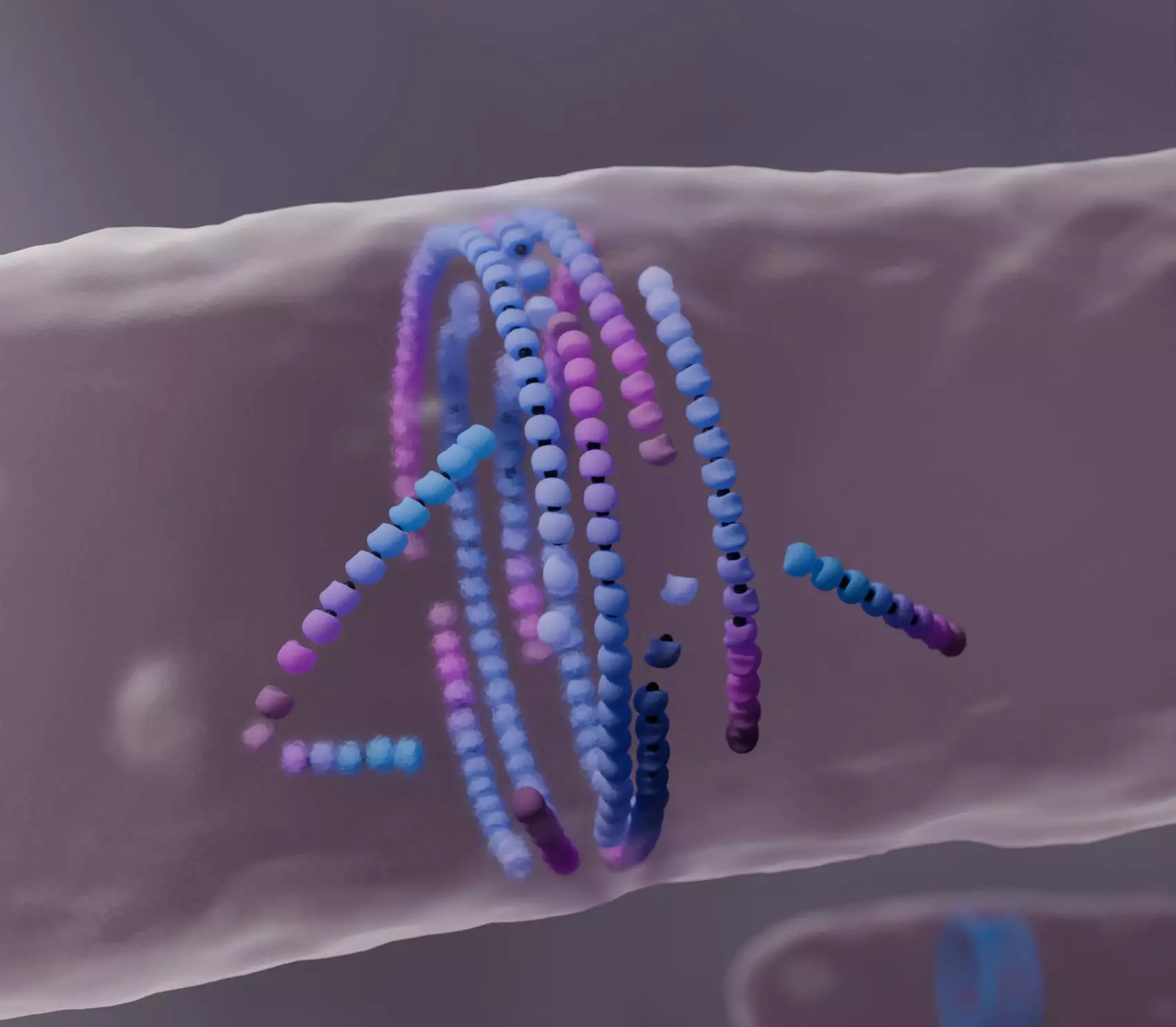Recent research led by Professor Anđela Šarić and her team at the Institute of Science and Technology Austria (ISTA) has illuminated a fascinating mechanism underlying bacterial cell division, significantly advancing our understanding of self-organization in biological systems. Their work, published in Nature Physics, delves into an unusual process called “dying to align,” where misaligned protein filaments break down strategically to facilitate the creation of a well-defined division ring at the center of dividing bacterial cells. This process opens up new possibilities not only for biology but also for engineering synthetic materials that can heal themselves over time.
Self-organization is a pivotal characteristic of life, fundamentally differentiating living systems from inanimate objects. This notion raises key inquiries: How do molecules identify their designated roles in complex assemblies? At what point do they decide to merge or unbind? Exploring these questions in the realm of bacterial cell division, the research highlights the dynamic interactions of FtsZ, a protein crucial for forming the division ring, ultimately shaping two daughter cells during cell reproduction.
FtsZ operates as an actor in the orchestration of cell division, forming filaments that dynamically grow and shrink in a process known as treadmilling. Traditionally described as self-propelling, this behavior represents the continuous influx and efflux of protein subunits along the filament’s length. However, the Šarić group scrutinized this traditional perspective, revealing that the interactions of FtsZ filaments extend beyond mere motility—emphasizing an essential physical mechanism of death and reconstitution that enhances self-organization.
By constructing a computational model, the researchers were able to simulate FtsZ assembly and the phenomenon of filament misalignment upon encountering physical obstacles. Their findings revealed that misaligned filaments “die” by disassembling, a process which paradoxically contributes to the creation of an organized and functional division ring. This knowledge enriches our comprehension of the processes governing cellular integrity, as well as significantly impacting how we think about the construct of “active matter.”
The collaboration between computational modelers and experimental biologists was critical in corroborating the findings of the Šarić group. The encounter with Seamus Holden, whose work involved live cell imaging of bacterial divisions, was serendipitous. As Holden showcased experimental evidence illustrating the cyclical “life and death” of FtsZ filaments playing a central role in ring formation, Šarić’s simulations mirrored these dynamics closely. The eventual partnership with Martin Loose, who specialized in in vitro FtsZ assembly, facilitated another layer of validation, enhancing the credibility of the computational model.
These collaborative efforts underscore a critical evolutionary step in the methodologies employed in current scientific research. By embracing multidisciplinary approaches, scientists are not only able to exchange insights but also confront questions beyond their traditional expertise. This spirit of cooperation exemplifies the convergence of ideas necessary to address the intricate challenges posed by complex biological systems.
Beyond the biological significance, the research harbors far-reaching implications for the development of synthetic materials. By comprehending the mechanisms that define how filaments self-organize and dynamically respond to their environments, researchers may be able to fabricate synthetic self-healing materials. Such innovations could revolutionize various industries, from robotics to material design, as we strive to emulate nature’s efficiency in creating resilient, adaptable systems.
Šarić’s vision transcends the immediate findings of her team: it encompasses a broader ambition of creating living-like matter from lifeless materials. By harnessing the principles derived from studying FtsZ’s turnover and self-organization, we may soon witness the integration of synthetic cells capable of mimicking biological functions.
Looking ahead, Šarić and her team aspire to extend their models to further explore how the FtsZ division ring assists in constructing cell walls required for division. As the research progresses, it promises not only to enhance our understanding of the fundamental principles of life at the molecular level but also to inspire innovations in the realm of synthetic biology and material science.
Ultimately, the ability of active matter to self-organize may serve as a cornerstone in bridging the gulf between the inanimate and the living world. This emerging understanding could lead to transformative breakthroughs that redefine our engagement with both natural and synthetic systems, forging new pathways for discovery and innovation.

